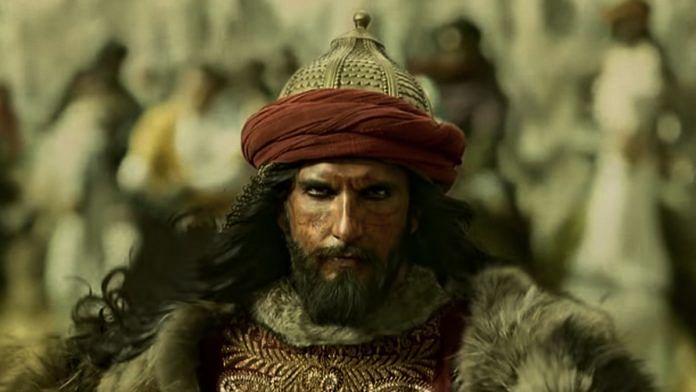
Thank you dear subscribers, we are overwhelmed with your response.
Your Turn is a unique section from ThePrint featuring points of view from its subscribers. If you are a subscriber, have a point of view, please send it to us. If not, do subscribe here: https://theprint.in/
The last decade of Indian Cinema has been all about movies made as biopics and inspirational events, modified for a cinematic experience. Amidst all of that, we have seen a significant increase in historical cinema, specifically revolving around the pre-colonial era. We saw some magnificent pieces like Bajirao Mastani, Padmavat and Tanhaji. There were other movies that hit the screen which focussed on retelling history but somehow couldn’t make a bold mark like Panipat. While history was laid down hundreds of years ago, these movies were given the best possible cinematography, editing and VFX to recreate a much more palpable experience for the audience.
Despite the constant effort for putting up cinematic masterpieces, there is one factor that turns ugly in the course of production and screening and it has somehow radiated across India in a very adverse manner. Yes, there are psychological reasons behind it but it can’t be avoided that the latent factor for such adversity remains political inclination at the end of the day. The part is referred to here is the writers creating antagonistic characters in a monotonous manner that hold no evidence of truth but only an extent of exaggeration. If we look at the aforementioned movies, all the antagonists were depicted in a rather barbaric manner, disregard for hygiene, no dinner table etiquettes, gory temperament, amidst many more. This has been justified often as creative license however, this is somehow only emphasised on Afghan/Mughal characters.
This has been very prominent in all the movies that have been released in the last decade and it plays well as the political scenario in the country is a little inclined towards that aspect. Showing a Muslim character in a barbaric demeanour tends to ascent the protagonist better. The advantage this move entails is that usually it is not often questioned as it is with respect to Hindu historical figures. The entire debacle that arose during the production of Padmavat and the protests that followed were not matched when Alauddin Khilji was portrayed as a savage.
Such portrayals have been appreciated for the actors’ efforts, but the same effort masks the disturbing element that is exaggerating in terms of repulsive appearance is a matter of concern as time passes, it grows into becoming a norm. Even the Hindu antagonist in Tanhaji was portrayed in a similar manner that suggested his association with the Mughal empire. Similarly, Panipat had a similar interpretation with Ahmed Shah Durrani and it only becomes more in bad taste with it. In such situations, the portrayal, however beautifully conceived, raises the concern of misrepresentation of people and does cause trauma to the religious sect that is latently hinted at.
And the whole narrative actually has shifted Mughals being glorious rulers and governors, to invaders. The Indian subcontinent thrived the most under the rule of Akbar and there is no doubt that the subcontinent unified in an unprecedented manner which opened up various trade routes and international relations. While that being said, certain facts get a bent out of shape perspective when we think of historical cinema such as Mughal-e-Azam and Jodhaa Akbar. Antagonising rulers like invaders is something that definitely brings in a political preference that is not in good taste in the current times.
It is high time that misrepresentation of facts, to attract an audience and then justify it as creative license should be stopped as the society tends to catch up on such norms easily and the nation becomes prone to a situation of high tension. Moreover, this kind of feeble attempt at emphasising negative characteristics often turns out to be just gimmicks that encourage extremists to take up vigilante manoeuvres and cause disturbance in the society that can have a lasting impact.
Also read: SubscriberWrites: ‘Democracy 2.0’ — A new definition of democracy is needed in changing times
These pieces are being published as they have been received – they have not been edited/fact-checked by ThePrint.


COMMENTS